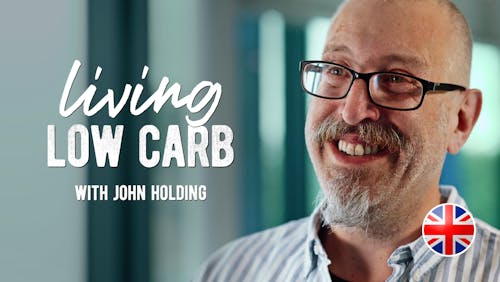Preventing type 2 diabetes requires transformation of our environments

Across the world, type 2 diabetes is increasing at an alarming rate. I am currently in Bermuda, which like many small islands, has a particularly high rate of diabetes. Just a short time here is enough to highlight how the environment is promoting the rise in type 2 diabetes.
While there have been some small steps to transform the diabetogenic environment, much more needs to be done to transform the food and physical environments in which we live in order to improve the health of the public.
How big is the problem?
The most recent edition of the International Diabetes Federation’s IDF Atlas estimated there were 415 million adults living with diabetes in 2015, an increase from 151 million in 2000. The great majority of that increase is due to the inexorable rise in cases of type 2 diabetes. This increase is occurring in just about every country in the world – diabetes is no longer a problem of rich societies. In fact, one of the most startling facts is how type 2 diabetes is increasing so rampantly in sub-Saharan Africa, an area that is predicted to see the largest increase in diabetes by 2040 of any global region.
Another sobering lesson is that the traditional explanation for the rise in type 2 diabetes in low-income countries is due to ‘urbanisation’; yet the most recent data suggest that the gap between urban and rural areas is narrowing, that the so-called diabetogenic environment is spreading out from the cities. The IDF Atlas also reveals the ‘island phenomenon’, with some of the highest prevalence rates being found in small islands, most notably in some of the Pacific Islands. In fact the world’s highest prevalence of diabetes is to be found in 30% of the 1500 inhabitants of Tokelau.
The huge rise in cases of type 2 diabetes is bad news at many levels. It is bad for the individuals affected and their families, it is also bad for health systems that can ill-afford the costs of treating the condition and its complications, and as it is a condition that mostly impacts upon the lives of people of working age, it is also bad for the productivity and wealth of nations.
Yet there is also reason for hope. We know from many studies and programmes that type 2 diabetes can be prevented, if individuals can be supported in changing their lifestyles. And as I discussed in my article last month, we now know that those same changes can lead to reversal of the underlying metabolic abnormalities that lead to type 2 diabetes, leading in some cases to reversal to normal glucose tolerance (so that the individual no longer has diabetes).With this information, many health systems are promoting programmes to prevent the progression to type 2 diabetes in those at risk, i.e. those who have prediabetes (or as the WHO and IDF prefer to call it, intermediate glucose tolerance). However, given that in some countries between a third (in the US) and a half (in China) of all adults are at risk of type 2 diabetes, should health systems not be taking a more global public health approach, and together with other national agencies, actually tackle the problem at its source – the so-called diabetogenic environment?
Tracking the source of type 2 diabetes
Last year, I was invited to speak at the London School of Hygiene and Tropical Medicine, in the lecture theatre named after Dr. John Snow. There I recalled one of my lessons in epidemiology at medical school, of how Dr. Snow identified a water pump in Broad Street in the Soho district of London as the probable source of a cholera epidemic. The epidemic had affected many families who lived near that pump. He managed to persuade the authorities to remove the handle, so that water could no longer be drawn from the pump, thus removing the source of the disease and protecting the local population from exposure to it.
I know this is stretching the metaphor, but rather than turn off the problem at its source, the current approach to prevention of type 2 diabetes is akin to tracking down people who live in the area around the Broad Street pump, and educating them not to obtain the water from that pump, even though alternatives may be less accessible or affordable. As long as the environment is still contaminated by the factors that causes the disease, surely with that approach we will always be trying to play catch up, in an ever-losing battle?Thus while prevention programmes, well-trained health staff and well-organised processes are important in the health system approach to addressing type 2 diabetes, we need also to be persuading policymakers of the need to transform the diabetogenic environments over which they preside.
So what constitutes a diabetogenic environment?
It will come as little surprise that the most powerful promoters of type 2 diabetes are physical inactivity and overconsumption of certain foods. There is now plenty of evidence of the impact of prolonged sedentary periods in increasing risk of type 2 diabetes, and of the adverse effect of inactive travel (that is, using personal motorised transport) on health.
The high personal tax environment in Belgium meant that when I worked at the International Diabetes Federation in Brussels, a company car was part of the salary package, as it still is for many working in Belgium. Thus several millions of people are provided with an incentive to drive to work, clogging up the highways, leading to long periods sat, inactive in the heavy traffic.
If that wasn’t bad enough, the journey ended in an underground car park, directly beneath the IDF offices, that were only accessible by using an elevator. Much of the working day was spent sat in a chair, before the reverse inactive process to get home again. How ironic. My metabolic health was only rescued by the forest across the road that provided an opportunity for using my legs at lunchtime, and the relatively healthy food environment that may explain why the prevalence of obesity in Belgium is little more than half that of the UK.
Unfortunately, many people with inactive and sedentary lifestyles live in areas where the food environment actively promotes the development of type 2 diabetes. An extensive review of the contribution of different food types to the development of type 2 diabetes is provided in a paper by Ley et al in the Lancet in 2014.
It will also come as little surprise that there is now overwhelming evidence for the role of sugar, especially in the form of sugar-sweetened beverages, in increasing the risk of type 2 diabetes. What sometimes does cause surprise is the evidence that excess consumption of starches, including white rice and potatoes, is also associated with increased risk of diabetes, and the lack of any evidence of specific fatty foods playing a role. The most diabetogenic environments therefore are those that are associated with sedentary lifestyles, lack of physical activity and ready access to energy-dense, high-sugar foods and drinks.The diabetogenic environment in Bermuda
For the past two months, I have been living and working in Bermuda to help address the 13% prevalence of diabetes on a background of 70% prevalence of overweight or obesity. Working with the Bermuda Diabetes Association and other stakeholders, we are implementing a programme that supports individuals to make lifestyle changes in order to manage and potentially reverse type 2 diabetes. At the same time, we are highlighting the environmental factors that are promoting the surging numbers with type 2 diabetes.
Like many countries, Bermuda has an abundance of energy-dense, nutrient-poor food and sugary drinks available at relatively low prices. There are single-serve cakes and pastries with an estimated 90 g of carbohydrates and the locally produced ginger beer has more sugar than Coca Cola.
This is compounded by a highly starch-based staple diet that includes pasta, potatoes and rice and peas, often all on the same plate. Fresh vegetables are mostly imported and are at least four times as expensive as in UK, whereas sugary food and drinks are about the same price as in UK, creating a cost disincentive to healthy eating, especially amongst low-earners.
There is also high availability of personal motorised vehicles (30% higher than in UK or Belgium); restrictions on car ownership mean that half of these are mopeds which can be, and literally are, driven right up to the door, creating the ‘IDF office effect’ across the whole island. The high vehicle density on narrow roads, most of which have no sidewalks, make walking and cycling feel quite treacherous, thus creating an additional disincentive to active transport.
When the Bermuda Diabetes Association was founded forty years ago, its focus was to support people with type 1 diabetes, as type 2 diabetes was relatively rare; it is no coincidence that the food environment was healthier then and people still walked and cycled. Thus, while there may be a genetic predisposition in some parts of the community, it has only expressed itself in the context of the changed environment.
Changing the environment
Of course, none of these is easy to resolve but there are now several examples where the diabetogenic environment is being challenged. Despite intensive opposition from industry, many countries have sought to buck the trend by turning off the sugar at its source, as in Mexico, where the soda tax introduced in 2014 has led to a demonstrable reduction in consumption of soda and increase in that of water.
This is a great start, but a soda tax alone will not solve the problem. Much more needs to be done to reduce portion size, reduce sugar content and curtail marketing of unhealthy foods. There is also a need to re-examine our definition of healthy foods, as in many countries fruit juices (with as high a sugar content as many sodas) are still considered healthy and exempt from restriction.Changing the physical environment, and especially the transport environment, presents a different set of difficulties. However, policymakers need to wake up to the health impact of the environments over which they preside. With political will, it can be done, as demonstrated by the Mayor of Oklahoma City, who was shamed by its designation as the ‘fattest city in America’.
He challenged the population collectively to lose a million pounds in weight and set about changing the city infrastructure, building sidewalks and other initiatives to encourage healthier lifestyles, with remarkable results. Other mayors are collaborating to promote urban policies that promote health, notably as part of the Cities Changing Diabetes initiative.
It could be more challenging to address these problems in rural areas or in small islands, but these examples show that political will to change the physical and food environments can positively benefit personal behaviours and improve public health. And if something can be done to encourage more to brave the narrow Bermudian roads on foot or on pedal cycle, I can testify to the benefits. Without a car, I am walking and cycling far more on a daily basis than I have done for years, with positive benefits to my body mass index, my waist circumference and my risk of type 2 diabetes.
—
Dr. David Cavan
More
How to reverse type 2 diabetes
Earlier
We need to talk more about reversal of type 2 diabetes
How I became an LCHF doctor reversing type 2 diabetes
A day in the life of a low-carb doctor























